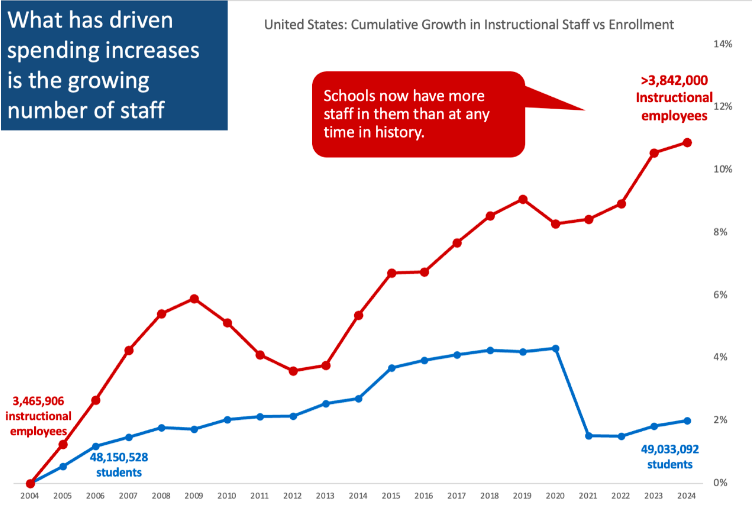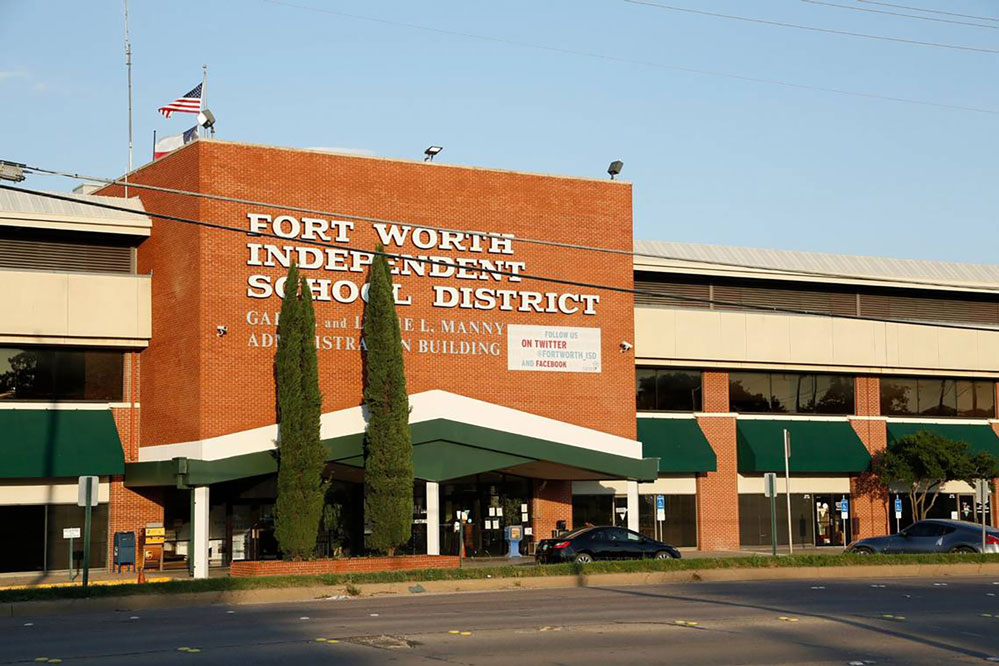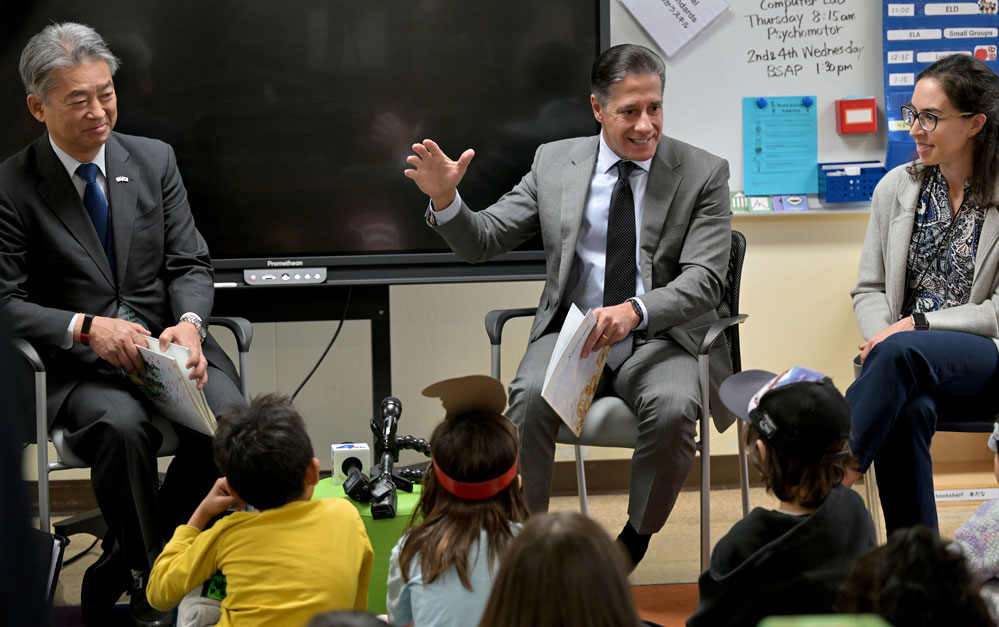Big Districts Like Philadelphia ‘Gamble’ on Higher Spending as Enrollment Falls, Study Finds
End of federal relief funds means 'all of the big districts at once' face decisions about layoffs and school closures, says Manhattan Institute.

The Philadelphia school district is 18,000 students smaller than it was a decade ago, but you wouldn’t know it by looking at its $4.5 billion budget for next school year.
Officials are dipping into reserves to cover an $88 million deficit. They’re continuing afterschool enrichment programs, like STEM and basketball, and promising to protect teaching, counseling and school leadership positions even though the COVID relief funds that paid for many of them have nearly dried up.
In talks with staff and the public, the district heard that the extra support “dramatically moved the needle academically and should be continued,” said district spokeswoman Christina Clark. Philadelphia, she added, aims to become “the fastest improving, large urban school district in the nation.”
But for now, the budget doesn’t reflect what some experts call “right-sizing” — reducing staffing levels to reflect an enrollment decline that is expected to continue for another decade.
“You’re making a big gamble,” said Daniel DiSalvo, a senior fellow at the Manhattan Institute, a conservative think tank. “You’re either flatlining or increasing your school spending while the number of students is falling.”
But Philadelphia, which is projected to run out of reserves in two years, is far from the only urban district in that spot. In a new paper released Thursday, DiSalvo and Reade Ben, an economic policy analyst at the institute, take stock of similar issues in the nation’s largest school districts. They show that while enrollment nationally fell 2% between 2013 and 2023, the number of teachers rose 11% and per-pupil spending continued to climb.
Prior to the pandemic, population and enrollment declines tended to hit certain pockets of the country, experts say; even Philadelphia closed more than 20 schools 10 years ago. But district and state leaders have no experience dealing with enrollment loss of this magnitude, which is exacerbated by expiring relief funds.
“Historically, when we’ve seen districts go through these things it’s been like a few of them at a time — not like all of the big districts at once,” said Marguerite Roza, director of Georgetown University’s Edunomics Lab. Those districts, she added, have “such a big impact on our country’s perception of what’s going on with public education.”

Feeling the ‘brunt of it’
The amount districts spend per student increased in all nine of the cities the authors examined — New York City, Houston, San Diego, Dallas, Austin, Philadelphia, Chicago, San Antonio and Los Angeles. Houston, for example, spent $8,011 per student in 2013 and in 2022, spent $14,183.
Total staff increased over that time period in four cities — New York, Chicago, Philadelphia and Dallas. The number of staff members in New York City increased from 11,202 to over 12,700.
“It is evident that school districts have yet to adjust their staffing and budgeting to the reality of fewer students,” they wrote.
Their data, however, doesn’t reflect more recent actions in some districts. New York City Mayor Eric Adams has cut $700 million from the district’s budget since November, but canceled a third round of cuts in February.
The story plays out a bit differently from state to state.
Philadelphia is looking for relief from the legislature, which is under a 2023 court order to remedy past school funding disparities. A bill currently pending would close an annual $1.4 billion gap for the district over the next seven years and significantly reduce future deficits, Clark said.
The authors also focus on Texas, which, unlike Pennsylvania, is growing and is expected to surpass California as the state with the most students in public school by this fall.
But that growth is more in the charter sector and in “sprawling suburban areas,” said Brian Eschbacher, an enrollment consultant who works with many districts in the state. He noted that school boards don’t get a lot of say in whether a charter opens in their district because the state education agency authorizes the majority of them.
“If 5,000 students enroll in charters instead of district schools, then the district feels the entire brunt of it,” Eschbacher said.
Confronting that reality, the Plano district is considering closures, while leaders in Fort Worth have delayed school consolidation for now. The Fort Worth district did, however, eliminate more than 130 positions that were mostly paid for with relief funds, including “success coaches” who worked with high school freshmen, instructional specialists and assessment staff. Another victim of enrollment loss: Full-time librarians, which some schools are cutting.
“Hopefully, kids will be selecting the right book because there’s not going to be anybody there to guide them,” said Trenace Dorsey-Hollins, who leads Parent Shield Fort Worth, an advocacy group. She doesn’t have a problem with the district closing schools, but understands why some community members pushed back. “Schools are like landmarks where parents and grandparents and older children have gone.”

The outlook is more dire in California, which is projected to lose another 660,000 students by the 2032-33 school year.
The reaction to those forecasts has varied. Some districts, like San Diego Unified, announced — and then rescinded — layoff notices this spring, while others, including Santa Barbara Unified, issued pink slips. Some plan to not replace staff members who leave or retire.
“It’s a mixed bag,” said Michael Fine, CEO of California’s Fiscal Crisis and Management Assistance Team, which monitors districts in financial distress. The number of districts on his watch list actually dropped from 37 to 23 between December and March. “What that tells me is that school boards did what they needed to do, given the data about where they were headed.”
The greatest loss — 278,600 students — is expected in Los Angeles County, where some districts, like Inglewood Unified, began losing students years before the pandemic. Home to massive new pro sports and entertainment venues that are pushing up the cost of housing, Inglewood is closing five schools at the end of next school year.
The Los Angeles Unified School District, the largest in the county, is currently seeking bids from firms that will “attract and retain students.” But the district is also closing one under-enrolled school this summer, and Superintendent Alberto Carvalho has hinted that more are to come.

California Gov. Gavin Newsom has pledged to protect schools from a shortfall in state revenues so they can adjust more gradually to the loss of federal aid. But school board members and the state teachers union say the plan, which includes borrowing from reserves, is risky and could end up costing districts more in the future.
To DiSalvo and Ben, that pushback shows that unions will push for a “new normal” of lower staff-student ratios and higher spending.
“This will put policymakers in a bind,” they wrote. To avoid cuts, they’ll have to either “increase taxes or find other ways to pay for schools with more teachers and staff but fewer students.”
Asking voters to approve a tax hike is also a risk, Roza said. In Vermont, for example, where residents vote on school budgets, many are rejecting their district’s proposals.
“Vermont has had steady enrollment declines for decades,” she said. “So communities are like, ‘Why do the costs keep going up?’ ”
Get stories like these delivered straight to your inbox. Sign up for The 74 Newsletter

;)
